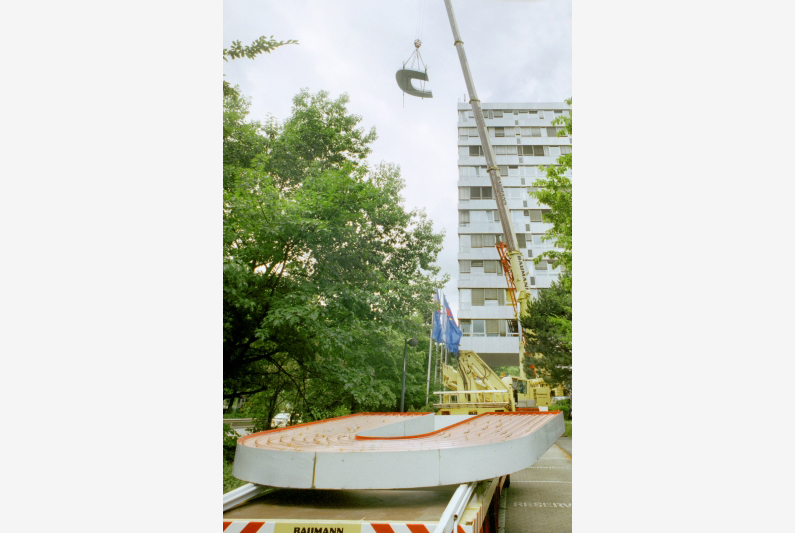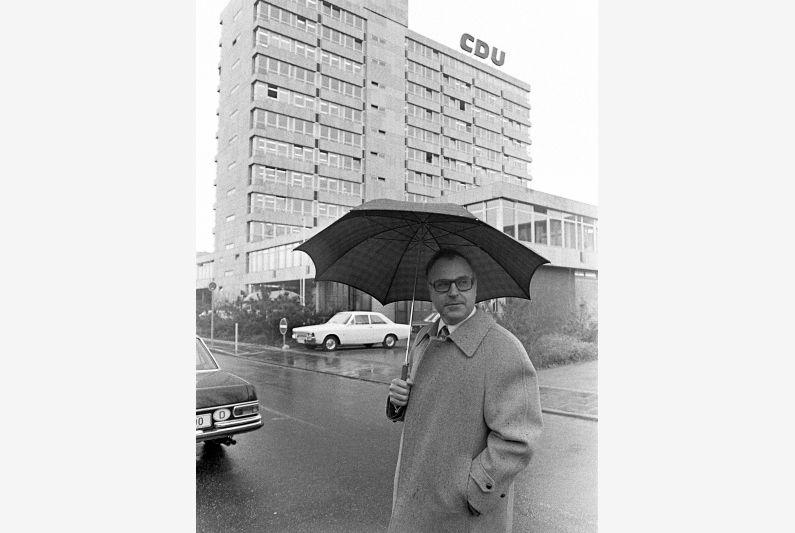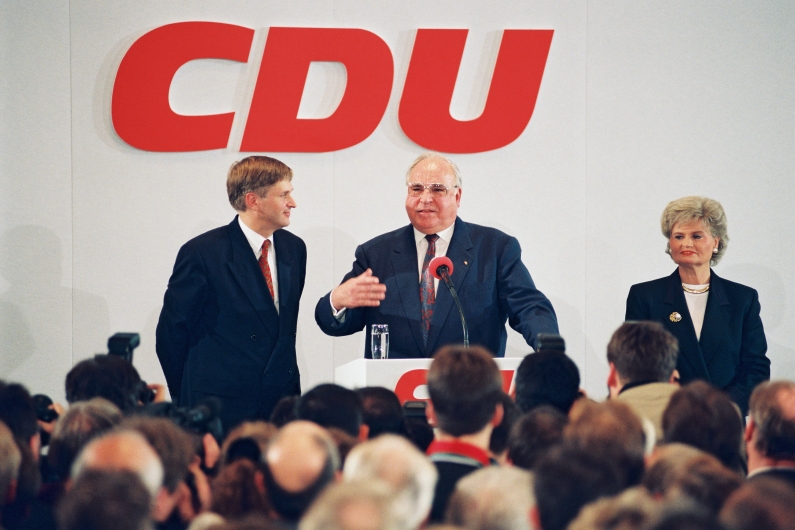Losing the chancellorship in 1969 was a wakeup call for the CDU. The party realised that if it were ever to regain its former robustness, its operations would have to be modernised, efficient, and managed by professionals – in short, as party secretary general Kurt Biedenkopf put it in 1973, a “corporate CDU” was needed. The ensuing modernisation efforts were embodied by the party’s newly constructed Konrad-Adenauer-Haus headquarters in the southern part of the government district, which the party moved into in December 1971. The building’s red illuminated rooftop letters became a favourite Bonn calling card for TV coverage.
However, the first steps toward constructing the new headquarters were taken much earlier: the party had purchased the site from the city back in 1962. Max Meid and Helmut Romeick, the architects hired in 1963 to design the building, had already created a number of highly regarded apartment buildings and office buildings, such as the Chase Manhattan Bank building in Frankfurt.
But the project was slow to get off the ground, on account of (among other factors) residents’ opposition to construction of a high-rise. The CDU didn’t apply for a building permit until December of 1965. Construction got underway in 1970, the party moved into the building in 1971, and it wasn’t officially dedicated until January of 1973 – an occasion marked by the celebratory display of a bust of Konrad Adenauer.
Fortunately, the ten-storey edifice, which sported a light grey limestone façade, provided ample space for all of the party staff members who up until then had been working at Nassestraße 2 and more than a dozen other locations. The tenth floor was given over to the secretary general’s offices. On the ninth floor, the new CDU chairman Helmut Kohl, who had succeeded Rainer Barzel in 1973, was replaced by Wolfgang Schäuble in 1998.


